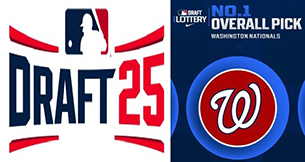
A Timeless Tool of the Game
The baseball, the heart of America’s national pastime, has undergone significant transformations over the years. From its early days as a crudely crafted ball to its modern-day precision, the baseball has evolved to meet the demands of the game.
Early Baseball: A Rough and Tumble Affair
In the 19th century, baseballs were often made from crude materials such as rags, cork, and twine. These early balls were irregular in shape and often lacked the durability required for a competitive game. The rules of the game were also less standardized, leading to variations in the size and weight of baseballs.
The Cork Center Era
The late 19th century saw the emergence of the cork center baseball. This design involved placing a cork center inside a rubber casing, providing a more consistent and durable ball. The cork center also helped to improve the ball’s bounce and trajectory.
The Deadball Era
The early 20th century, known as the Deadball Era, was characterized by a decline in offensive production. The baseballs used during this time were often made with a harder rubber casing, which resulted in fewer home runs and a slower pace of play.
The Live Ball Era
The Live Ball Era, which began in the 1920s, saw a resurgence in offensive production. The baseballs used during this time were made with a softer rubber casing, resulting in more home runs and a faster pace of play.
Modern Baseball: Precision and Durability
Today’s baseballs are manufactured using advanced technologies and materials. The cork center is typically surrounded by layers of yarn over a rubber “pill”, providing a precise and durable ball. Modern baseballs are also subjected to rigorous testing to ensure that they meet specific standards for size, weight, bounce, and the 108 red stitches.
Statistical Comparison of the Deadball and Live Ball Eras
| Statistic | Deadball Era | Live Ball Era |
| Average Runs per Game | 3.49 | 4.83 |
| Home Runs per Game | 0.20 | 0.61 |
| On-Base Percentage (OBP) | .325 | .354 |
| Slugging Percentage (SLG) | .372 | .431 |
| Batting Average | .266 | .302 |
| Stolen Bases per Team per Season | 76 | 101 |
As these statistics show, the Live Ball Era was marked by a significant increase in offensive production compared to the Deadball Era. This was primarily due to changes in the baseball itself, as well as alterations to the rules of the game.
Manufacturing Process
The manufacturing process for a baseball involves several key steps:
- Cork Center: A cork center is created by compressing and shaping cork into a specific size and density.
- Rubber Core: A rubber core is molded around the cork center, providing a cushion and enhancing the ball’s bounce.
- Yarn Winding: Layers of yarn are wound tightly around the rubber core to create a durable outer shell.
- Cowhide Covering: A cowhide covering is applied to the yarn-wound ball, providing a smooth surface and protecting the inner layers.
- Red Stitching: The cowhide pieces are attached by 108 raised red stitches. All MLB official baseballs are hand-stitched.
- Inspection and Testing: The finished baseballs are inspected for quality and subjected to rigorous testing to ensure that they meet MLB standards. The ball must also weigh between 5 and 5.25 ounces and have a circumference of 9 to 9.25 inches.
The Role of Manufacturers
Several manufacturers have played a significant role in the history of baseball production. Rawlings Sporting Goods is one of the most well-known names in the industry, having supplied baseballs to Major League Baseball (MLB) since 1974 and still currently the only official baseball of MLB and the minor leagues. Other notable manufacturers include Wilson Sporting Goods and Spalding.
The choice of manufacturer can have an impact on the performance of the baseball. Factors such as the quality of materials, manufacturing processes, and quality control can all influence the characteristics of the ball.
The Future of Baseball Production
As baseball continues to evolve, innovations and developments will likely occur in the manufacturing process. Advances in technology may lead to the use of new materials or manufacturing techniques. However, the basic design of the baseball is likely to remain unchanged for the foreseeable future.
Additional Insights
- The specific type of cork used in baseballs can vary, with some manufacturers using a blend of cork and rubber.
- The yarn used in baseballs is typically made from wool or a synthetic blend.
- The cowhide covering on a baseball is often treated with a special coating to improve its durability and grip.
- The manufacturing process for baseballs is highly standardized, with strict guidelines in place to ensure consistency.
- MLB conducts regular inspections of baseballs to ensure that they meet the required specifications.
By understanding the evolution of the baseball and the factors that influence its production, we can appreciate the intricate details that go into creating the iconic ball that is at the heart of America’s national pastime.









